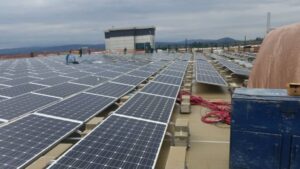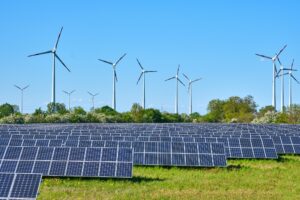Monocrystalline solar cells
This type of solar cell is made from thin wafers of silicone cut from artificially grown crystals. These cells are created from single crystals grown in isolation, making them the most expensive type of cell (they cost around 35% more than poly crystalline cells). However, they are the most efficient, with ratings between 15-24%.
Polycrystalline solar cells
This type of solar cell is also made from thin wafers of silicon cut from artificially grown crystals. But instead of single crystals, these cells are made from multiple crystals grown together. This makes them cheaper to produce but also reduces their efficiency to currently about 13-18%.
Amorphous solar cells
This is the cheapest type of solar cell to produce. It is relatively new to the market and is produced quite differently from the other two types. Here, instead of using crystals, silicone is placed very thinly on a backing substrate.
The amorphous cell has two strong benefits. Firstly, the layer of silicon is so thin it allows the solar cells to be flexible and secondly they are more efficient at low light levels (like during winter).
This convenience comes at a price though. Amorphous cells have the lowest efficiency rating – approximately 7% – 9%. This makes double the panel area necessary to produce the same output as with the other cell types. In addition, as this is a relatively new technology, there is no agreed-upon industry-wide production technique yet. This makes them less robust than the other two cell types.
Hybrid solar cells
Hybrid solar cells are not solar cells in their own right. Instead they are a combination of both amorphous solar cells and mono crystalline solar cells. They are known as HIT solar cells (hetero junction with intrinsic thin layer – is a bit of a mouthful!!), and have higher efficiency ratings than any of the other three types of solar cell alone. Additionally, they are also better suited to sunnier climates, with temperatures often exceeding 25 °C, where they can create up to 10% more electricity.
At TheGreenAge, we feel that for most installations polycrystalline cells are most suitable. They offer good value for money and are relatively efficient.
Source: http://www.thegreenage.co.uk


